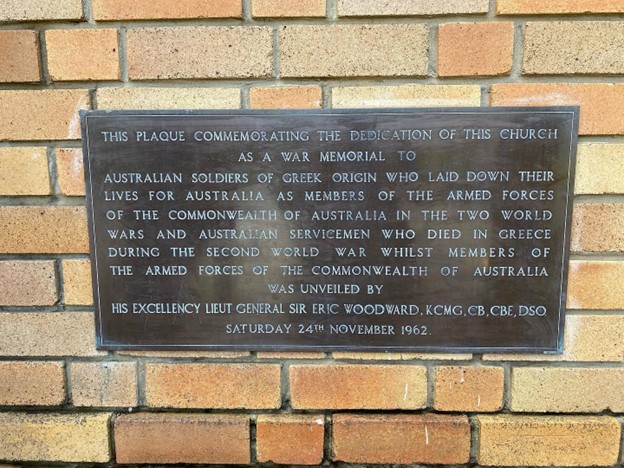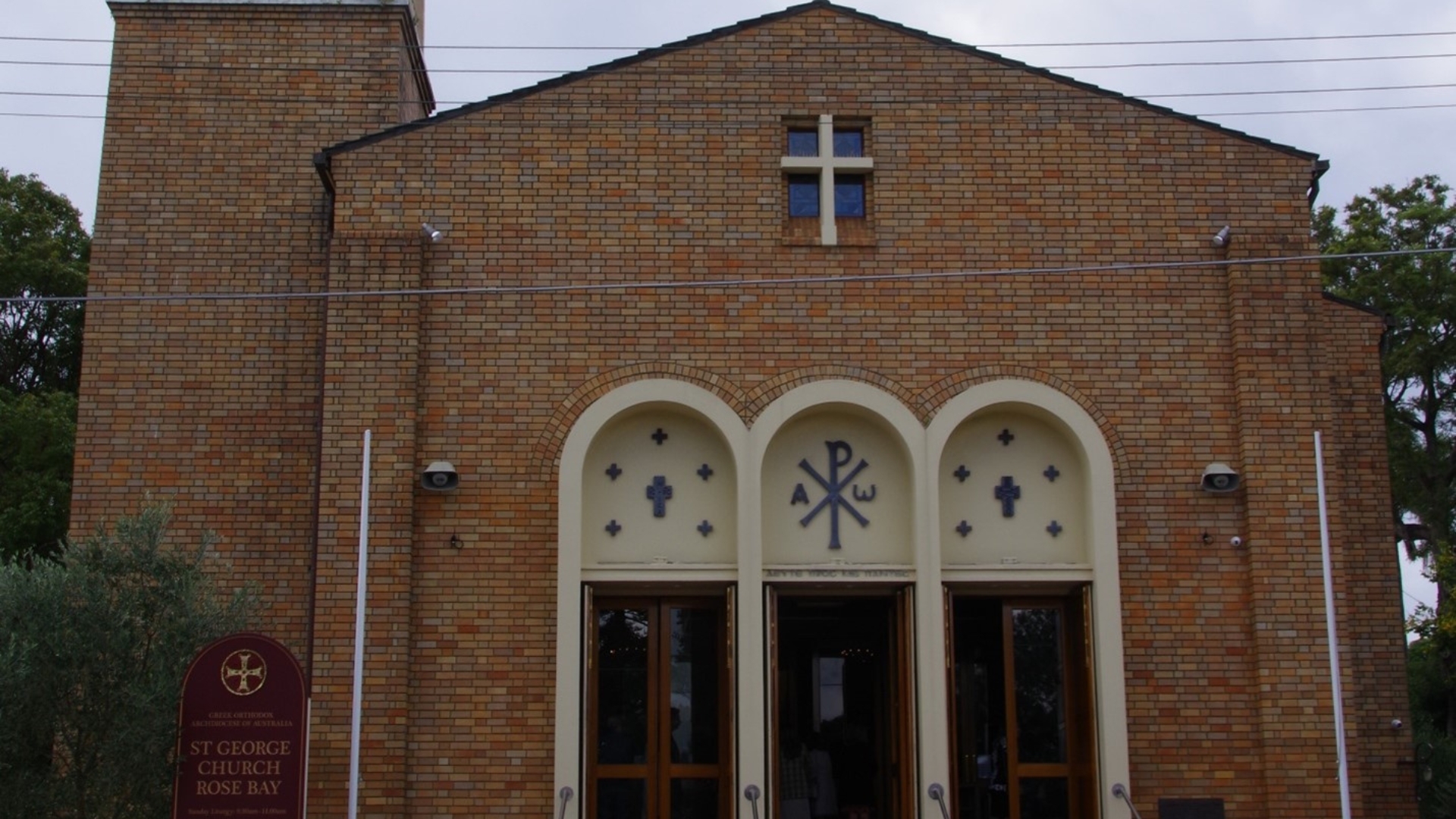On Monday 12 February, Woollahra Council will likely consider and vote on a planning proposal to heritage list the St George Greek Orthodox Church.
After Council had voted on 14 August 2023 to proceed, a planning proposal to list the St George Greek Orthodox Church and war memorial complex and setting, including interiors and moveable relics at 90-92 Newcastle Street, Rose Bay as a local heritage item in Schedule 5 and on the Heritage Maps of the Woollahra LEP 2014 was placed on public exhibition.
This is the culmination of a process that commenced in 2022 and culminated on 5 February 2024 with the Council’s Environmental Planning Committee (EPC) endorsing the strong recommendation by Council staff and heritage consultants to have the church, built in 1962, heritage listed after the conclusion of the exhibition for public comment.
At the time, The Greek Herald published an opinion piece by George Vardas, a prominent member of the Greek Australian community and heritage consultant, regarding the background to the heritage proposal. Both the English and Greek versions of that article published by The Greek Herald online and in its print editions formed part of the consultation documents which the Council placed on public exhibition.
Ahead of the meeting of the EPC, only five submissions were received during the exhibition period, three in support and two opposed.
The two objections were from James Stevens and Dean Haritos, both members of the St George Church Parish Committee.
Mr Stevens wrote, without giving any reasons, that the proposed heritage listing would be an unnecessary heritage order and constraint and claimed that the majority of church parishioners are against it. Mr Haritos echoed these comments and claimed that a heritage listing would put unnecessary restrictions on the Church.
Rozy Dorizas, the Secretary of the Parish Committee, made a submission in support of the heritage listing, stressing that the church retained a strong cultural significance for its parishioners. Ms Dorizas also praised the elegance and magnificence of the Church’s interior and exterior and added that as a society, “we need to respect, acknowledge and maintain history and the elements which shaped this history.”
Nick Andriotakis, a prominent local resident and parishioner of the St George Greek Orthodox Church at Rose Bay, and also Secretary of the Joint Committee for the Commemoration of the Battle Crete and the Greek Campaign, wrote a powerful endorsement for the proposed heritage listing.
He noted that the church was built over 60 years ago by a “nascent but visionary Greek Australian Community” and was dedicated as a War Memorial in memory of the Australians that lost their lives in Greece and to Australians of Greek heritage that served Australia.
According to Mr Andriotakis, hundreds of families from the Parish area had members that served in the Battle of Crete and the Greek Campaign in WW2 and in WW1 in the Gallipoli Campaign through the Greek island of Lemnos and the Salonika Front. This mutual connection of Australia with Greece through these military ties inspired the founders of the St George Greek Orthodox Church to dedicate it as a War Memorial. Not coincidentally, the Governor of New South Wales. Sir Eric Woodward, who unveiled the war memorial plaque on 24 November 1962, actually served in Greece during World War II.

Mr Andriotakis also repeated an earlier submission he made during the consultation process with the community that the church’s architecture adopts a modernist approach with a restrained Byzantine Orthodox style reflecting a desire to make Australia home, whilst also reflecting their Greek Orthodox heritage. From the Flemish Bond face brickwork topped by the bright white bell tower to the clean interior, the building is a fusion of Greek and Australian building elements reflecting a modern society.
Mr Andriotakis added that many parishioners had approached him and expressed their support for the proposal to list the church as a heritage item.
He concluded: “Should the Heritage listing be made, St George Greek Orthodox Church will be the first purpose built Greek Orthodox Church, that comes under the auspices of the Greek Orthodox Archdiocese of Australia, to be listed as a Heritage Item. The heritage listing would prevent future unsympathetic alterations and will protect the integrity of the design vision of the founding community ensuring the Church’s continuance in a respectful way. Should any future modifications, alterations, additions be required the Heritage listing would not necessarily prevent them but ensure that such addition/alterations are carefully considered and respectful to the original design intent.”
The other written submission was made by George Vardas, who in the intervening period has also been appointed to the Multicultural NSW Advisory Board. Mr Vardas emphasised the strong historical bonds between the church and the wider Greek Australian community and cited the case of the Holy Cross Greek Orthodox Church in Wollongong which ironically was also opened in 1962. In a message to the Church founders, the then-NSW Premier R J Heffron pointedly praised the “bonds of comradeship” between Australians and Greeks, particularly those forged in war.
Mr Vardas also wrote that the architect of the Wollongong Holy Cross Church, D R Kennedy, spoke of the challenge to design a church that would be complimentary in character to the parish’s liturgical requirements, although not necessarily in the true traditional Byzantine form, as it was felt that it was to be a church for coming generations and whose design therefore would need to respond to the prevailing building techniques and economic and social conditions of the period. This sentiment, Mr Vardas submitted, clearly applies to the St George Church in Rose Bay.
The Council heritage and planning team commented that, notwithstanding the petition compiled by the Church during the community engagement stage, based on submissions received through the public exhibition, there is no evidence to suggest that the majority of parishioners do not support the proposal to heritage list the church. Furthermore, they noted that heritage listing does not aim to constrain use, development or change to a place. Rather, it seeks to manage changes to a building so that they appropriately conserve the significance of a place. This may mean that alterations, upgrades, and new developments like additions and extensions are guided and considered in their design to be more sensitive to the heritage building but, at the end of the day, the owners of heritage-listed places are still in charge of managing their properties within the necessary planning frameworks.
The proposal to list the St George Greek Orthodox Church was originally part of a proposal to list five places of worship as local heritage items within the Woollahra Local Government Area. On 11 September 2023, Woollahra Councillors voted unanimously to finalise the heritage proposal for the other four churches, those being Paddington Church of Christ, St Andrews Scots Presbyterian Church in Rose Bay, the Sydney Chevra Kadisha in Woollahra and the Vaucluse Uniting Church.
The only push back has come from certain elements within the St George Church based on a fear that a heritage listing would have an adverse effect on the Parish, despite the very comprehensive analysis and investigation undertaken by the Council and its staff in assessing the heritage values of the Church and putting to bed those baseless concerns.
Woollahra Council staff continue to maintain that the heritage listing is justified as the St George Church meets six (of the seven) criteria for heritage significance, for its historical, associational, aesthetic, social, rare, and representative values.
It is now for Woollahra Council to confirm that the St George Greek Orthodox Church in heritage terms provides and continues to provide a sense of place that is truly worth preserving.

